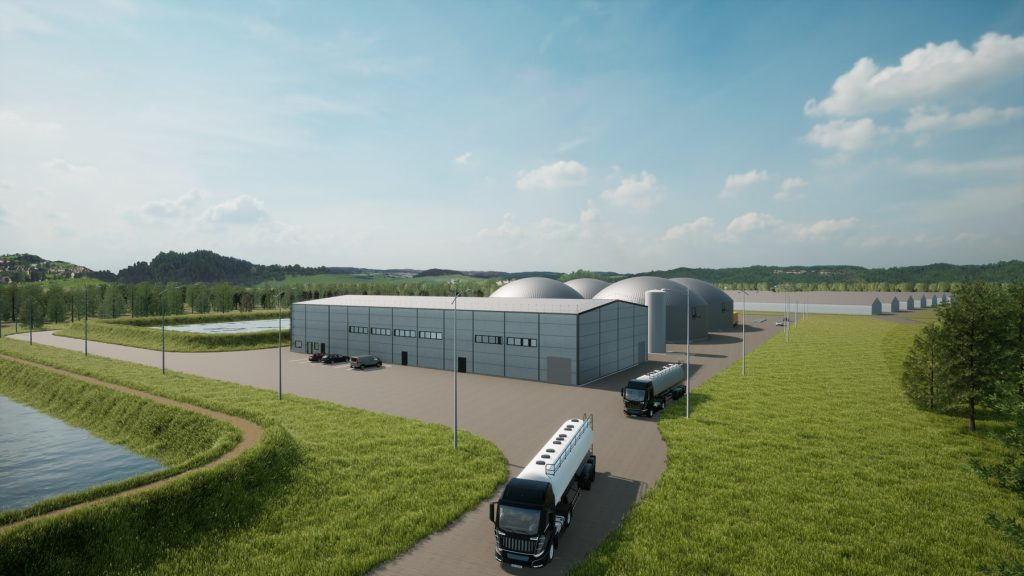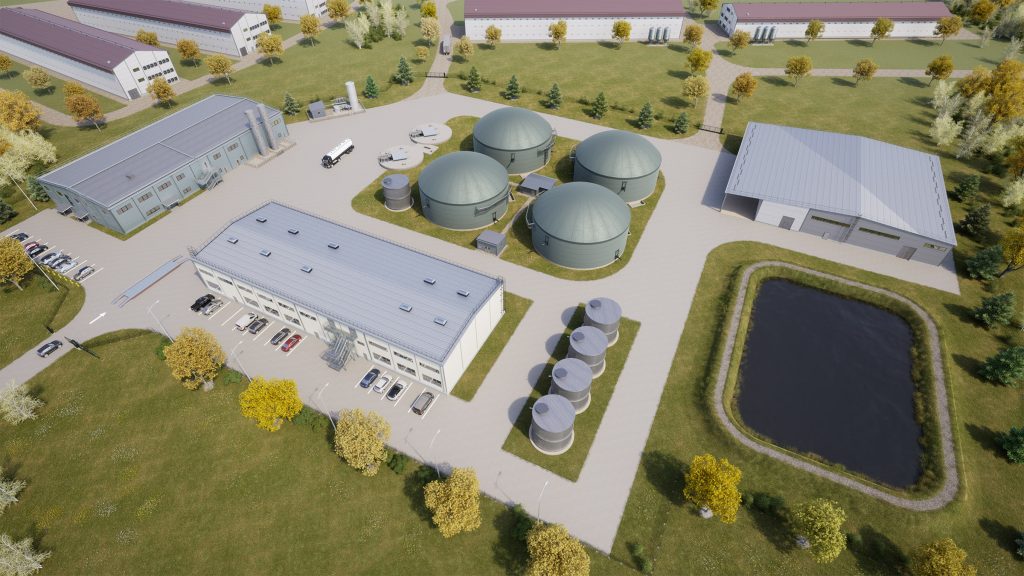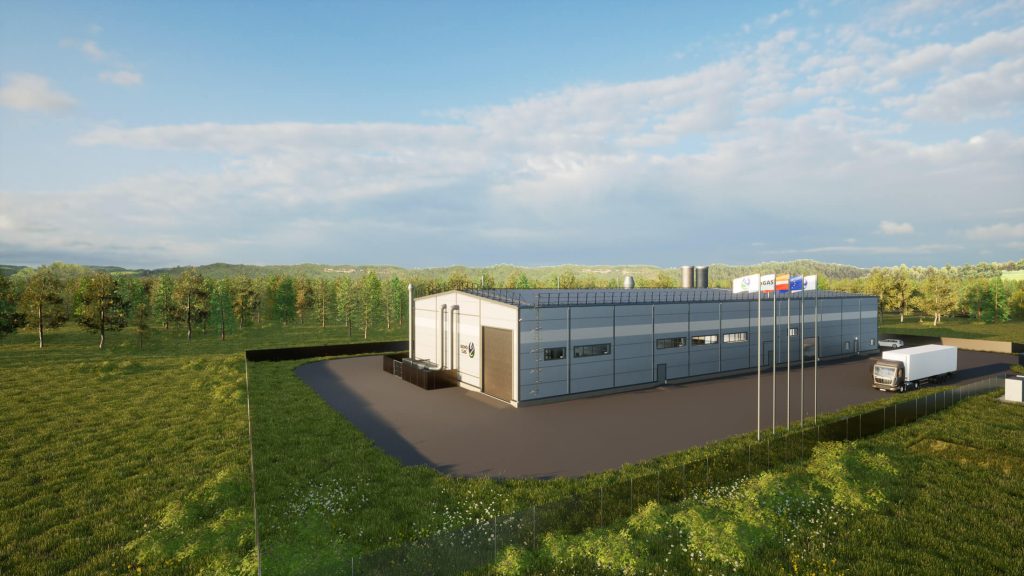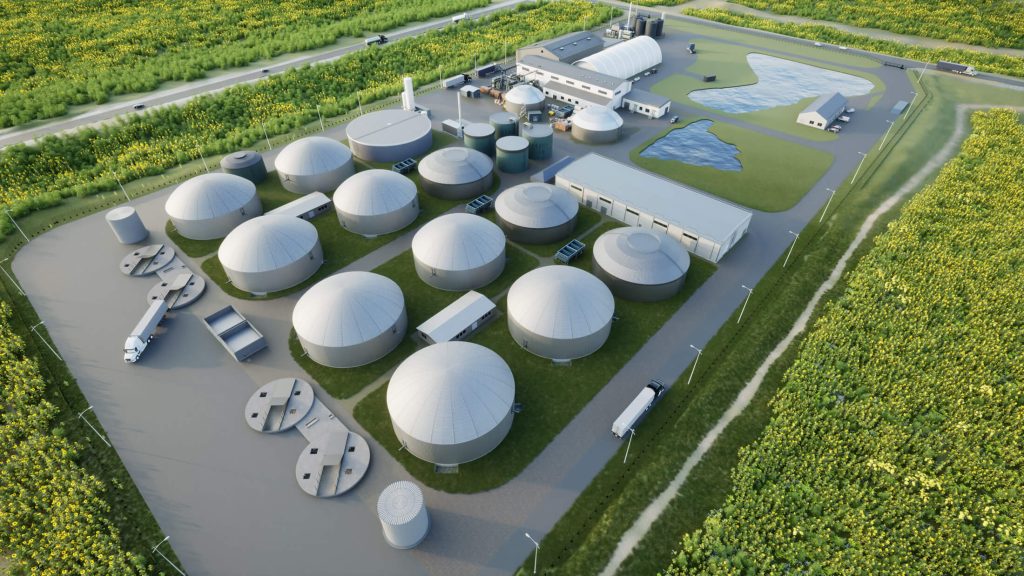PRODUCTION OF BIOGAS AND BIOMETHANE
BIOGAS
SEP QUALIFICATION IN BIOGAS PRODUCTION
We offer SEP customers comprehensive and customized biogas and biomethane production solutions from project to construction and operation. We have experience in the implementation of biogas and biomethane station projects in the Baltic States, the USA and Europe.
From cogeneration to biomethane extraction, we are able to provide the customer with everything necessary - technologies, engineering execution, documentation, project management and construction, in order to realize a functional station that will generate additional income and facilitate the company's daily operations.
The SEP performance includes the entire technological performance, from raw material preparation and fermentation, digestate processing and production of valuable fertilizer, to gas purification and efficient conversion into energy.
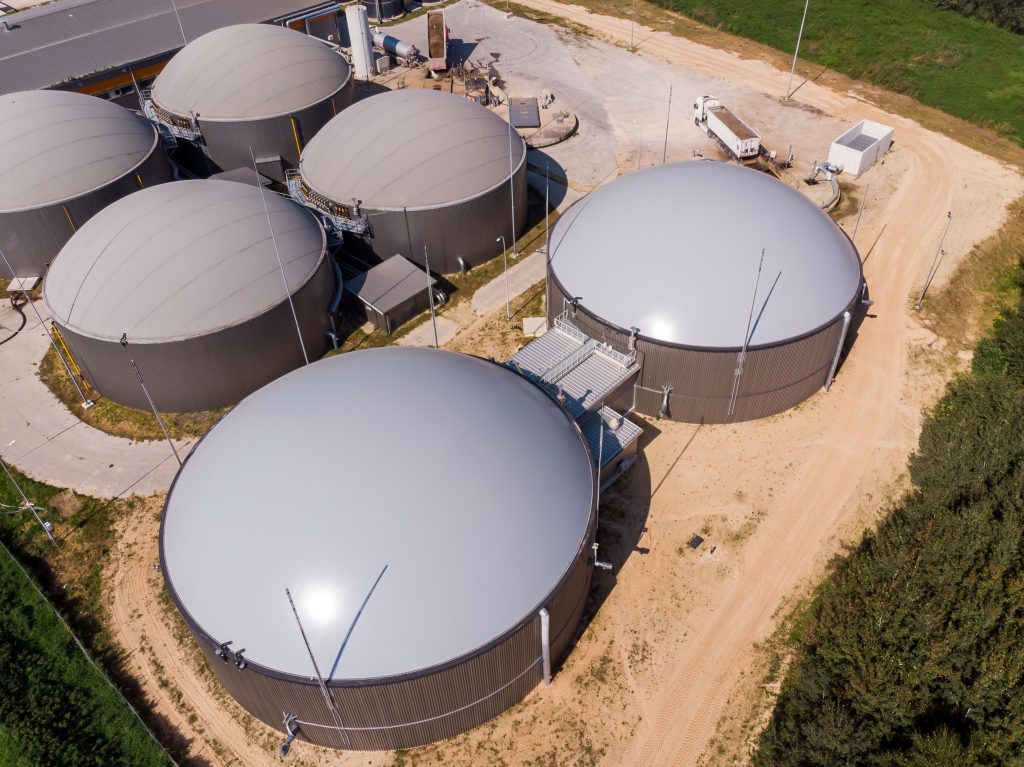
BIOGAS PRODUCTION
UNIQUE TECHNOLOGY – THE ONLY ONES IN THE INDUSTRY!
SEP has developed and implemented a world-unique biogas production technology for poultry farms. It is probably the only biogas station in the world that efficiently produces high-quality biogas and biomethane with a high methane content, using only pure bird manure as raw material.
There is no limit to the diversity of the project - our competence is to convert any organic raw material into biogas, biomethane, liquefied or compressed natural gas, additionally recovering and producing food-grade carbon dioxide (CO2). as well as dry and liquid fertilizers. The technology allows the use of 100% organic waste.
BIOGAS STGATION
WHAT IS EGG ENERGY™?
EGG ENERGY is a biogas power plant designed, built, and operated by SEP, launched in 2015. EGG ENERGY uses self-generated biogas to produce electricity and can deliver 2 MW of electricity and 2.1 MW of heat.
The biogas is produced exclusively from chicken manure, making EGG ENERGY one of the most unique cogeneration plants in the world. The technology is based on anaerobic digestion. This means that the raw material is broken down in the presence of bacteria, with low oxygen levels. The biogas is a by-product of this.
SEP is already upgrading its EGG ENERGY plant. The construction encompasses an additional hydrolysis tank, two fermenters with a pumping station and a new pre-treatment unit. These additions will boost the plant’s annual biogas output to 18,000,000 m³, with a heat production of 295 kWh.
CURRENT BIOGAS PROJECTS
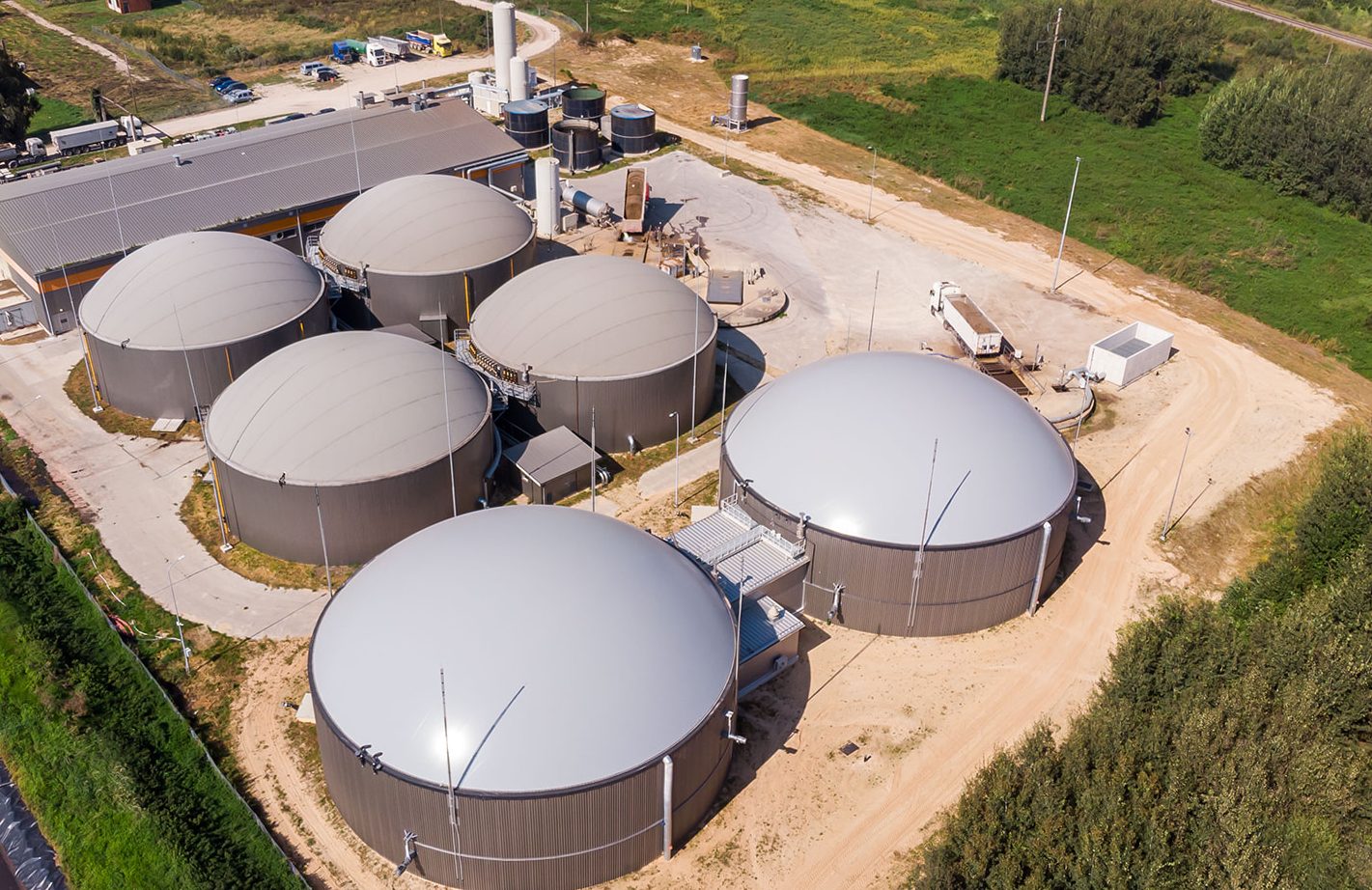
BIOGAS STATION
EGG ENERGY MODERNIZATION
As part of the SEP project EGG ENERGY expansion", the station was expanded in 2024, increasing its processing and biogas production capacity by 100%. Adapting to the existing project, a hydrolysis tank, 2 new fermentation tanks with a pumping station, a more powerful pre-treatment station and all related support technologies and engineering networks were built.
In addition, a 2 km long underground biogas transmission was built, which connects EGG ENEGY with BOVO GAS – a biogas purification or biomethane production station. Currently, EGG ENERGY and BOVO GAS are already producing around 1200 m in tandem3 of biomethane per hour, which is fed into the common natural gas network. EGG ENERGY can process up to 100,000 tons of chicken manure per year and turn them into 18,000,000 m3 biogas.
BIOMETHANE
BIOMETHANE - GREEN NATURAL GAS
Biomethane is a purified form of biogas that meets natural gas quality standards, making it suitable for injection into the natural gas network or for use as a renewable fuel or fuel. Refining biogas to biomethane significantly increases the added value of the production process, as energy production from fossil fuels is directly replaced.
Technological diversity
Adapting to the specification, biogas composition and volumes of each project, SEP is able to implement various biogas purification technologies:
- PSA or pressure change adsorption
- Membrane systems
- Chemical cleaning
The final product
Final product tailored to the needs of each project
- Biomethane for feeding into the natural gas network
- Bio-CNG or compressed biomethane
- Bio-NG or liquefied biomethane
Green CO2 recovery
Adaptation of technologies from biogas purified CO is possible2 for recovery and liquefaction. The final product is food-grade carbon dioxide, which is a sought-after raw material in the food, medical, and material manufacturing industries.
This addition represents a resource recovery of close to 100% from the biogas produced
E-fuel
Using captured green CO₂ and green hydrogen produced from renewable resources, SEP provides customers with an opportunity to tap into the fast-growing e-fuel market by expanding their offerings with high-demand, sustainable future fuel products that drive profitability and resource efficiency.
BIOMETHANE
BOVO GAS - PURIFICATION OF BIOGAS TO BIOMETHANE
SEP's qualifications and experience have been proven in a implemented biomethane plant in Latvia – BOVO GAS, where, using PSA biogas purification technology, 1,200 m3 of biomethane per hour is already being purified and injected into the general gas network .
The station has been designed with the possibility of future expansion, which will increase the productivity up to 1800 m3 of biomethane per hour or 150 GWh per year.
- Biomethane production capacity: 1200 m3/hr
- Biomethane purity: ≥ 97.6%
- Biomethane recovery: ≥ 99.7%
- Electricity consumption (without compressor): 0.239 kWh/m3
- Heat recovery: 0.11 kWh/m3
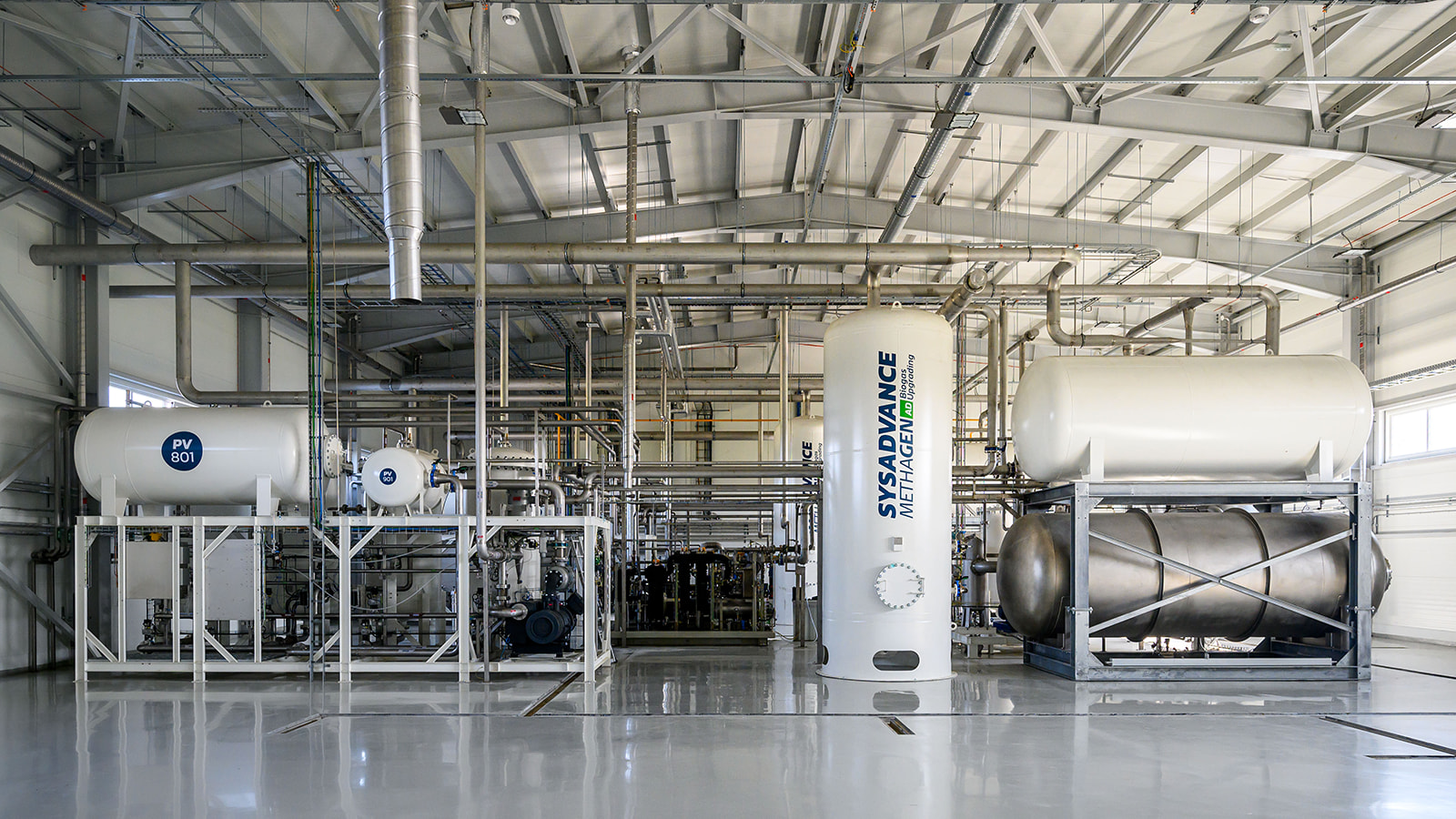
BIOGAS PRODUCTION
AGRICULTURAL FERTILIZER AS A BY-PRODUCT OF THE PROCESS
The raw materials used in the biogas production process, which are rich in micro and macro elements important for the soil, can be processed into high-quality agricultural fertilizer products. SEP will implement all necessary technological solutions for the production of products, which will be integrated into the overall biogas plant complex.
Benefits
- High quality green manure
- Completed production cycle
- Ecological sustainability
- Use of raw materials 100%
Dry granular fertilizer
With separation and granulation technology, it is possible to turn the organic part of the digestate into high-quality dry fertilizer. It is rich in micro and macro elements that are very important for the soil - phosphorus, potassium, nitrogen, magnesium, etc.
Liquid fertilizer from chicken manure
The composition of chicken manure after the biogas extraction process acquires a very favorable chemical composition ratio (N:P:K – 1.1:0.8:0.5) for soil enrichment.
BIOGAS AND BIOMETHANE TECHNOLOGIES
GUARANTEED RESULT
The team of SEP biogas project managers and engineers will ensure the complete implementation of the project within the specified deadlines. In project development, we provide calculations and analysis to create the most suitable station concept and business model for each client. We perform laboratory tests on raw materials and adjust every technological aspect exactly to your wishes and specifications. Starting from the development of the concept and ending with automation and starting the operation of the station - SEP will provide full support to make your business greener, more sustainable and more profitable.a
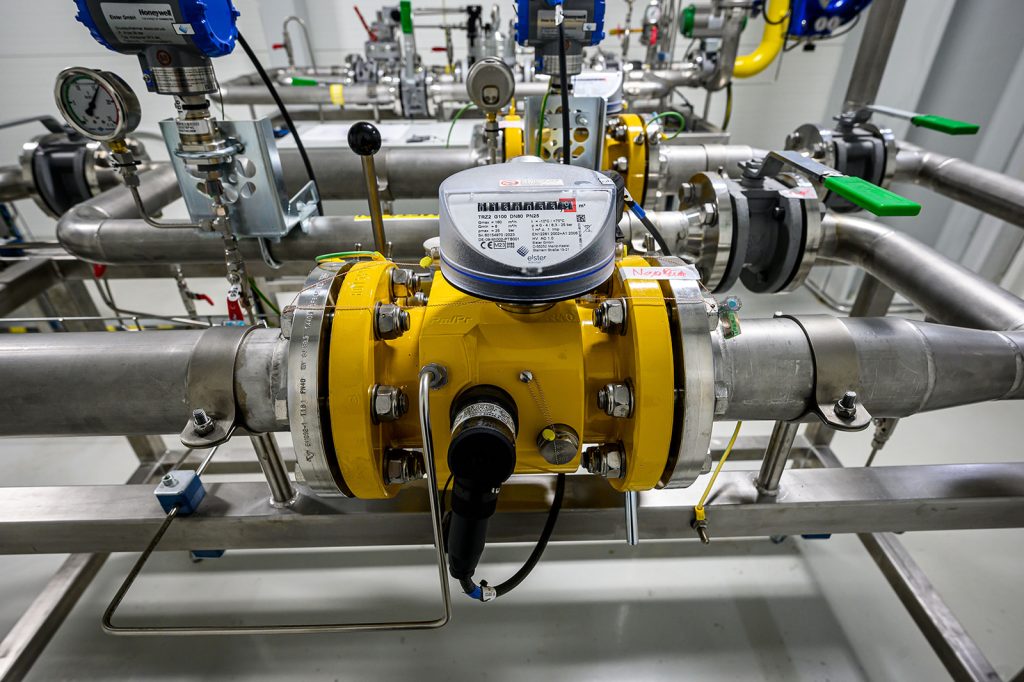
BIOGAS AND BIOMETHANE
ESTABLISHMENT OF STATION TOGETHER WITH SEP
Feasibility study
- Process mass balance – from raw material to products.
- A potential problem. identification.
- Business model.
Concept development
Concept development
- Defining functionality
- Concept engineering
- Calculation of investment and operating costs
- Contact with authorities
Design
- Choice of technologies
- Development of the station project in full
- Coordination of the project with the customer and authorities
Construction
- Author supervision
- Relations with subcontractors
- Construction process management and construction supervision
- Commissioning of the facility
Commencement of operation
Commencement of operation
- Automation of station systems
- Starting the operation process
COOPERATION PARTNERS IN BIOGAS PRODUCTION
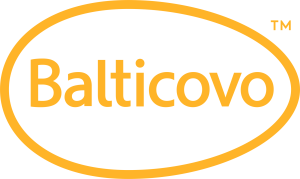

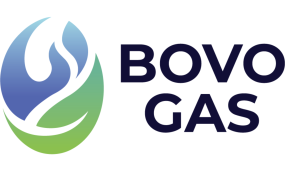
Find answers to your questions
Frequently asked questions
What are the main steps in the biogas plant design process?
The design process of a biogas plant includes a preliminary study that evaluates the availability of raw materials and the required capacity. A detailed technical design is then developed, which includes fermentation tanks, gas storage facilities, purification systems and utilities. Finally, a construction plan is developed and the necessary materials are selected.
What are the main risks of investing in biogas and biomethane projects?
The main risks are related to technology adoption, raw material supply chains and market price fluctuations. However, with careful planning and the involvement of experienced technical partners, these risks can be greatly reduced. Changes in national regulations can also affect profitability.
What construction challenges can arise in the development of biogas plants?
Difficult engineering requirements such as fermentation tanks that require resistance to corrosion and high pressure gases can arise during construction. Likewise, infrastructure such as biogas pipelines and power lines must be aligned with local regulations and environmentally friendly solutions.
What are the main advantages of investing in biogas production?
Investments in biogas production offer stable returns thanks to the constant demand for renewable energy. In addition, biogas production promotes sustainable business and reduces waste treatment costs. State support mechanisms and subsidies for renewable energy projects are also available.
What are the most important factors when choosing technologies for biogas production?
When choosing technologies, the composition of raw materials, plant capacity, energy efficiency and the required degree of purification for biomethane production should be taken into account. Cost and maintenance factors, as well as the sustainability of the system and its environmental impact, are also crucial.
How long does it usually take to build a biogas plant?
The time depends on the scale and complexity of the project, but usually the construction of a biogas plant lasts from 12 to 24 months. This includes design, construction preparation, actual construction, installation and testing of technological systems.
What engineering systems are essential for the biogas production process?
The main engineering systems are fermentation tanks, gas storage tanks, biogas purification systems, networks of pumps and pipelines, as well as electrical systems that ensure the supply of the produced energy. No less important is the safety system that prevents gas leaks and ensures the station's reliability.
What are the potential sources of revenue from biogas production?
Sources of revenue include the sale of energy (electricity, heat or biomethane), the sale of by-products (such as granular fertilisers), as well as potential revenue from the trading of emission allowances. In addition, it may be possible to receive subsidies and other support mechanisms from the state.


